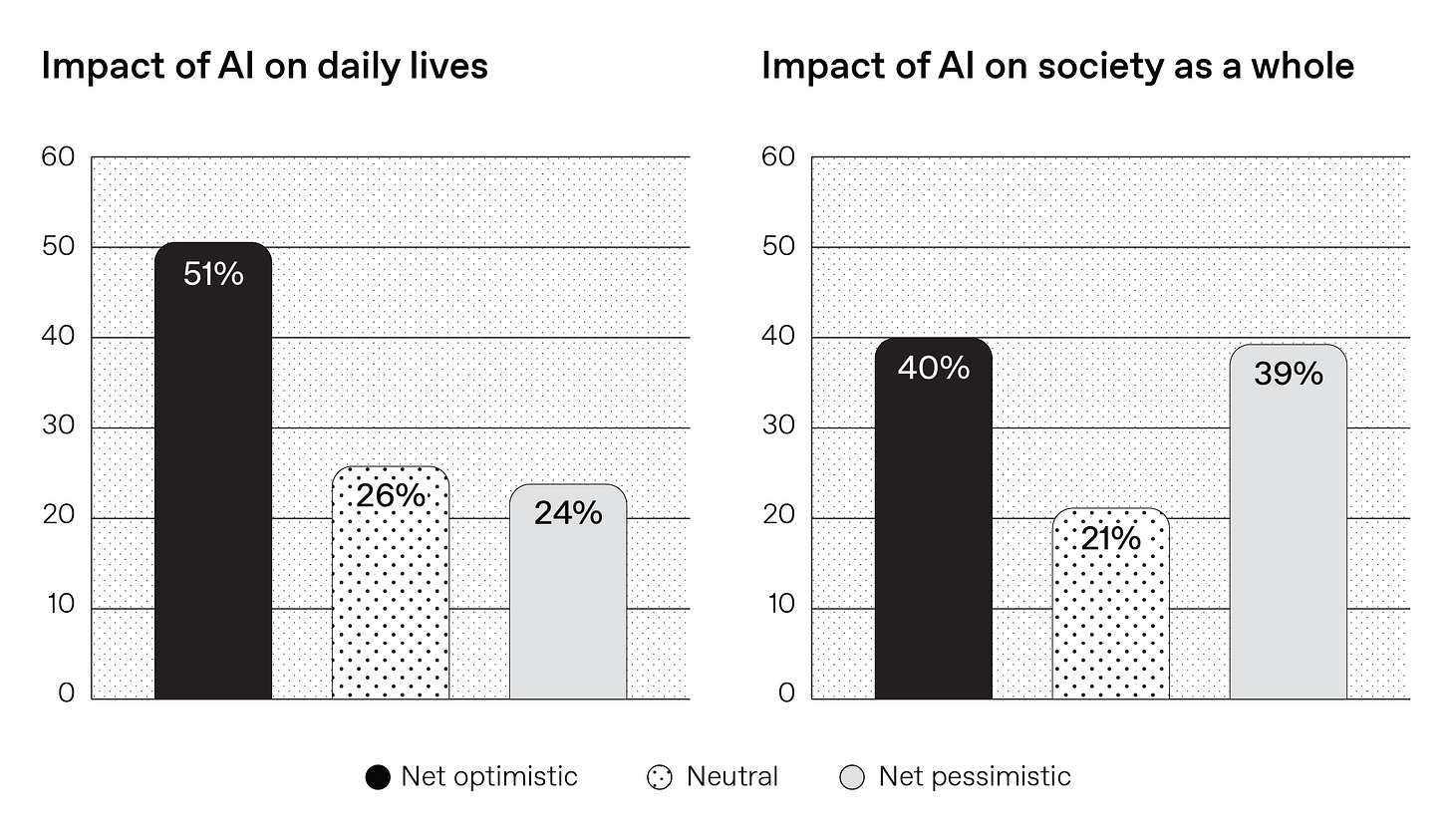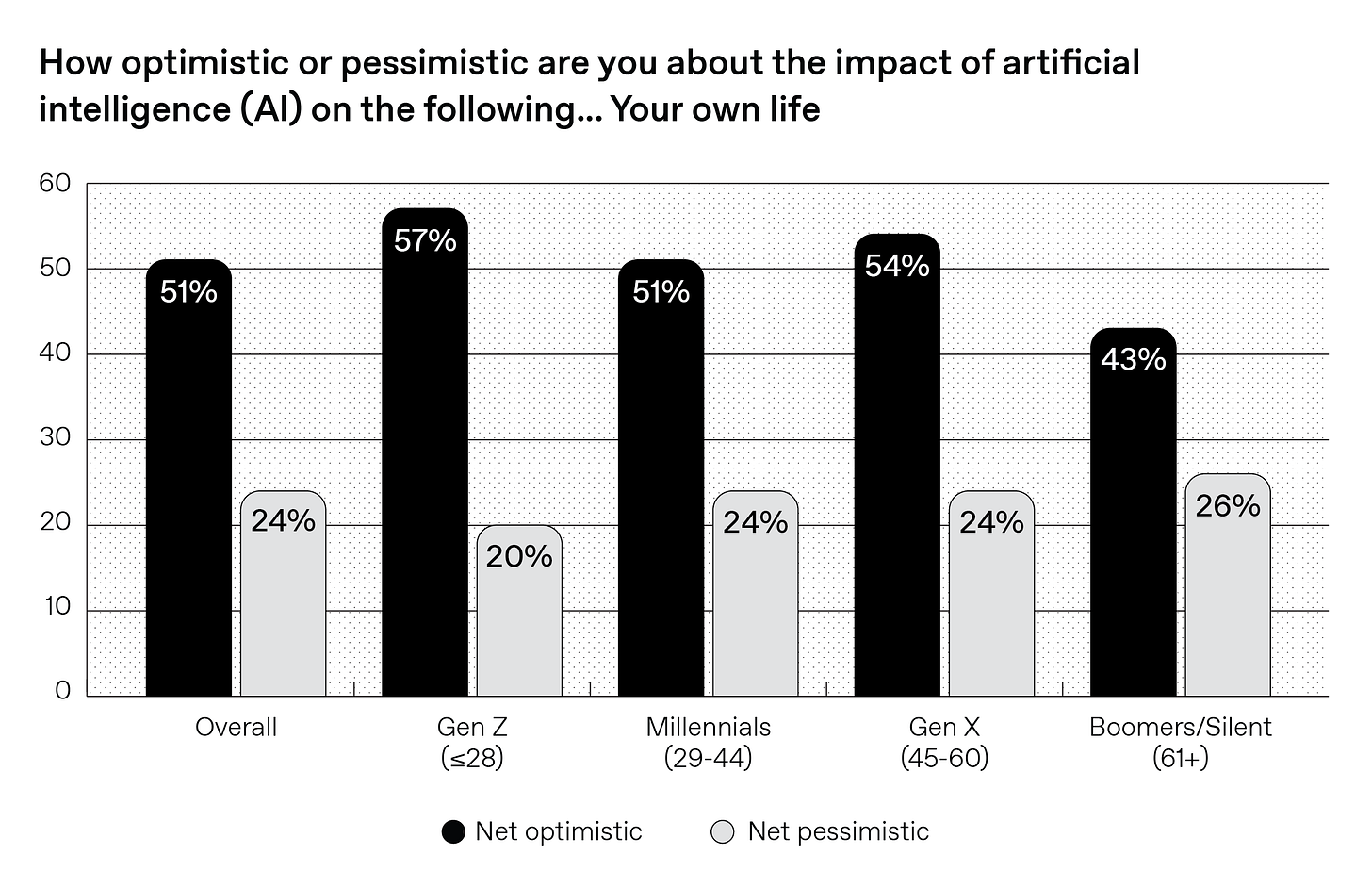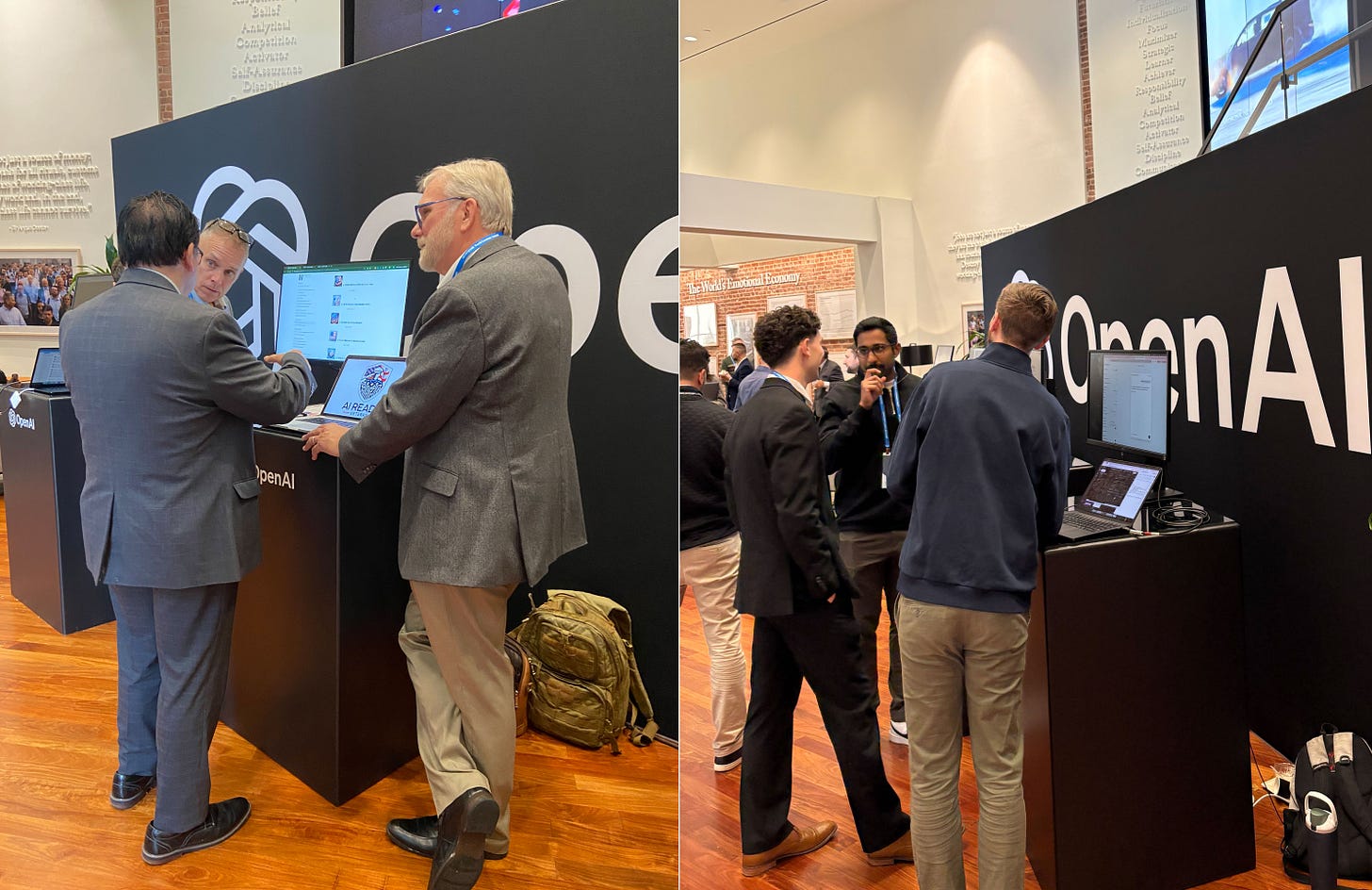About that AI Bubble
AI for DC
Hi
Welcome (back) to The Prompt. AI isn’t well understood, but we learn a lot in our work that can help. In this newsletter, we share some of these learnings with you. If you find them helpful, make sure you’re signed up for the next issue.
[News] About that AI bubble
New technologies often develop with a degree of “irrational exuberance.” Railroads, electricity, and the internet all saw early cycles of speculative booms and busts, followed by much longer periods of revolutionary change and progress. The economics underpinning all these innovations ultimately stabilized as they became essential elements of all our lives, delivering advances of immeasurable import and impact.
So is the current AI economy a bubble? There are definitely signs of speculation, particularly when you see billions of dollars flowing to AI startups with semi-sketched out ideas and no actual products or customers. Some of these ideas might work, but many of them won’t. As our CEO Sam Altman said recently, “When bubbles happen, smart people get overexcited about a kernel of truth.”
It’s that kernel that really matters. There are clear, fundamental reasons to continue to see AI as a world-changing technology that merits unprecedented investment, enablement, and adoption. AI is much more than an asset class – it’s a general purpose technology that’s changing how we work, how we learn, how we do scientific research, how we transact, and so much more. It’s increasingly hard to imagine our lives without AI, just as we can’t imagine a world without electricity. That’s why AI has emerged as the fastest-growing technology in history, with adoption rates that exceed the personal computer and the internet.
Fundamentally, AI’s underpinnings are also much more durable and valuable than other boom-bust investments in economic history – like Dutch tulips or comic books (sorry, Superman). Much of the AI investment boom is being directed to infrastructure that enables advanced AI capabilities – but also has general-purpose uses. Expanded energy generation, modernized power grids, advanced semiconductor design and fabrication, and secure, sustainable supply chains are essential investments whether or not every AI company succeeds. These are substantial and flexible assets that will outlast market cycles and be economically valuable in almost any scenario. Even if some AI bets go bust, the physical and technological foundations will remain.
We’ve seen this before. The late 1990s dot-com era saw plenty of speculative bets – but it also funded the fiber-optic networks, computing infrastructure, and technically capable talent that has powered the digital economy for decades. Today’s AI surge likely has a mix of hype and hard assets, speculation and genuine transformation.
So, is there an AI bubble? Maybe in some segments of the market. But bubbles aren’t just signs of mania – they’re also signs that something truly important is happening. In hindsight, speculation on railroads and the internet looks less like a mistake than the down payment on a new era. – Adam Cohen, Head of Economic Policy
[Data] AI’s ‘optimism gap’
New findings via TrueDot (Oct. 10-14, 1,003 US adults, +/- 3.2%) help suss out the zeitgeist on AI: a greater share of Americans are more optimistic about the impact of AI on their own lives (51%) than on society as a whole (40%).
This finding aligns with what we’ve seen in other polling on AI—with significant majorities of Americans wanting new and innovative solutions when it comes to health care, education and other systems that impact their own lives, but with a top concern about AI being society’s loss of control over it.
“People see how AI can make their own lives faster and sharper, but they’re less sure it’ll make the world better or that we can manage it at scale,” says Jon Cohen, TrueDot’s founder and CEO. “That’s the optimism gap.”
What also stands out in this survey is the generational divide on AI, with younger generations much more likely to be optimistic about AI’s impact on their lives: 57% of Gen Z, 51% of millennials, and 54% of Gen X are optimistic, compared with just 43% of older Boomers and Silent Generation members.
So why are millennials a little less optimistic about AI than older Gen-Xers? One possible explanation is that it’s due to their economic setbacks and scars from the Great Recession—and their seeing AI as yet another potential financial obstacle. Back in April, we commissioned a Panterra survey showing that Americans ages 35-44 were less favorable to tech companies than the average, which seems to support that theory.
[Demos] Our latest ‘AI Fair’
At last week’s Semafor World Economy Summit, OpenAI partners ranging from US national lab scientists, to nonprofits, to top management consulting firms, plus our own awesome Solutions Engineering team, together showed how ChatGPT and GPT‑5 are powering high-impact workflows. A few highlights:
Boston Consulting Group showcased in‑house enterprise tools, including a tailored prompt suggestion co-pilot for common corporate tasks and a manager’s dashboard tracking adoption and impact across teams and workflows.
AI Ready Veteran: This nonprofit built custom GPT coaches that map military skills to civilian roles, surface best-match employers, prepare jobseekers for interviews, and smooth the transition to civilian life and work for veterans, military members and their families.
OpenAI Solutions Engineers demoed (1) an image‑to‑location assistant that infers likely geo-locations from animals, plants, and rock signatures in the picture; (2) a constituent‑services workflow for legislative aides that maps complaints to public‑service data and drafts communications; (3) an economic research app that assembles core indicators, shows how they change over time, anticipates emerging metrics, and ships a simple HTML front end.
Slalom Consulting built a custom GPT that taps internal knowledge to scaffold requests for proposals (RFPs), which solicit bids, and also helps sales teams produce structured, policy‑compliant RFP responses.
The bottom line: from science and public service to enterprise ops and procurement, these demos show GPT‑5 accelerating critical work while keeping humans in the loop.
[About] OpenAI Academy
The Academy is OpenAI’s free online and in-person AI literacy trainings for beginners through experts.
OpenAI has called for a nationwide AI education strategy – rooted in local communities in partnership with American companies – to help our current workforce and students become AI-ready, bolster the economy, and secure America’s continued leadership on innovation.
1:30 PM – 2:30 PM EDT on Oct 30
[Disclosure]
Graphics created by Base Three using ChatGPT.












Welcome to Substack, team OpenAI Global Affairs. This is a fine debut and a thoughtful read. You managed to balance optimism with realism in a way that feels both grounded and forward-looking. The “kernel of truth” line from Sam is a keeper. It captures the tension at the heart of every big leap in tech.
I’m excited to see where The Prompt goes next. The structure is clear, the insights are solid, and the tone already feels more conversational than most policy work. Keep that spirit alive and maybe slip in a little more caffeine next round. ;) You’re off to a strong start.
The analysis here nails it. AI speculation fuels headlines, but the durable infrastructure, talent, and workflows being built now will shape lasting transformation. The real opportunity is leveraging these foundations to solve concrete problems, exactly what forward-thinking teams are demonstrating with GPT‑5 today.